I have noticed that many mobile phone chargers already do this: For each 1 A of current that the mobile phone draws, the charger's output will be increased by 0.05V or 0.1V or something similar, to compensate for the ohmic voltage loss due to the resistance of the wire (USB cable).
Example for 0.1V voltage drop compensation, assuming base voltage 5.1V:
- 0A → 5.1V
- 1A → 5.2V
- 2A → 5.3V
- 3A → 5.4V
This Powstro HKL-USB32 wall charger does exactly that:

That's because through longer cables, the charging IC of mobile phones sees a voltage drop which makes the charging controller falsely consider the charger exhausted. The charger partially compensates for that, to “fool” the mobile phone into drawing a higher current.
When connecting a female USB port to the terminals of a variable laboratory bench power supply (correct polarity regarded), increasing the voltage manually subsequently only increases the charging speed on powerbanks, which only pay attention to the momentary voltage, not the initial voltage drop.
Mobile phones however choose a current at the moment when connecting it to the charger, and then hang onto it, no matter how much the voltage increases afterwards. (No overvoltage. Many mobile phones, including the one I used to test it, support 9V and 12V for fast charging standards. All tests at my own risk.)
Example: If I select 7 volts on the bench power supply that powers the female USB port, then enable power output while the mobile phone is already connected to the USB port, the mobile phone (which supports all input voltages from 5V to 14V, therefore no overvoltage) does choses 0.83A. When I decrease the voltage to 6 volts, it is still 0.83A. If I increase to 10V afterwards, it is still precisely 0.83A. The current can not increase, only decrease under the following conditions: If source voltage goes too low, near 4.5V, or if the battery is becoming sated (full). It can also happen that the phone chooses e.g. 6V 1.6A. Increasing to 12V would result in overwattage for the battery, therefore the current would also decrease. But the phone tries to maintain it's initially decided Ampèrage.
How do I increase the voltage in conjunction to the current?
- The goal is that the mobile phone draws it's full power over any length of wire.
- Is there any module for that? (I could not find one by searching for “Voltage Drop Compensation” and “cable drop compensation”.)
- I don't have a bench power supply with a “sense voltage” feature yet.
There are already boost voltage modules, but they are just as useful as increasing the source voltage manually.
One thing I could do is placing a boost voltage module near to the tip of the USB cable. But is there a way to increase the source voltage in conjunction?


